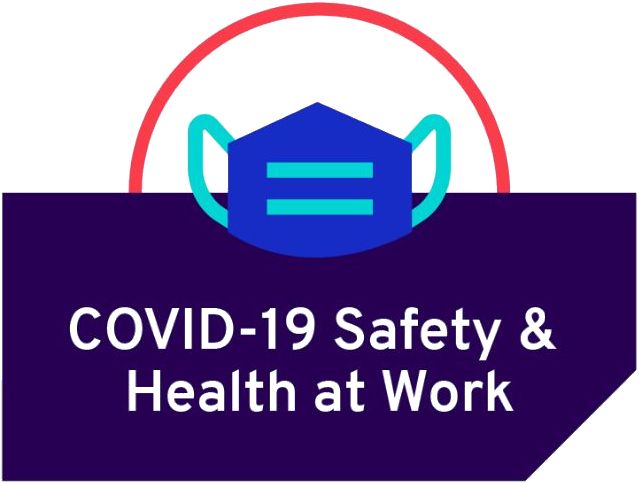As states and cities begin to lift the strict lockdown measures effected early last year to curb the spread of the coronavirus, employers must implement proper Covid-19 safety protocols to keep infection rates down. Otherwise, we risk reversing the massive gains made so far in taming the covid-19 pandemic.
According to the Occupational Health and Safety Agency (ASHA), organizations that create written covid-19 safety checklists are in a better place to safely reopen work and protect workers from catching diseases.
The CDC recommends and has gone a step ahead to create a return-to-work safety template that organizations can adapt to reopen safely. You can also check out the World Health Organization’s considerations for public health and social measures in the workplace in the context of Covid-19.
The following is a summary of your role as an employer in fighting covid-19 and steps you can take to safely reopen your business or organization without exposing employees to preventable risk.
Role of Businesses and Employers
Businesses and employers can play an important role in preventing and slowing down the spread of the covid-19 pandemic by following Covid-19 safety protocols to curb the disease in the workplace. Proper and informed covid-19 preparedness, response, and control can significantly slow down the spread of the disease at and outside work.
Businesses and organizations that enforce proper social distancing in the workplace, stagger employee shifts, limit the degree to which employees interact with each other, and incorporate telework into their regular routines ultimately make the workplace safer and employees more protected against Covid-19.
Responsible employers also consider geographical isolation in the workplace, identify the proportion of employees at an increased risk of severe illness, and enact supportive policies regarding sick leave for affected staff.
Additionally, employers are encouraged to coordinate with state and local health officials to obtain timely and accurate information for appropriate response.
A 9-Point Business Reopening Covid-19 Safety Protocols and guidelines
The following 9-point work resumption guideline is adapted from the CDC’s Covid-19 Employer Information for Office Buildings and OSHA’s Guidance on Mitigating and Preventing the Spread of Covid-19 in the Workplace.
1. Continue to enforce strict social distancing measures
Employers’ first and biggest responsibility is to ensure continued enforcing the strict social distancing measures recommended by the major health organizations and agencies. Continually remind employees that Covid-19 is still here and that they must stay at least six feet from each other. Also, discourage handshakes, hugs, and fist bumps while encouraging outdoor seating areas for small group activities.
2. Ensure better HVAC performance
Studies show that the coronavirus doesn’t spread as quickly in outdoor areas places with good ventilation. To this end, before returning to the office, consider installing high-efficiency air filters and generally improving your heating, air conditioning, and ventilation process.
3. Identify high transmission areas
High traffic areas, such as hallways, bathrooms, lobbies, and shared offices, as well as common touchpoints within the facility, such as door handles, light switches, and elevator stations, must be treated differently. Organize additional cleaning and disinfection in these areas. For example, in the bathroom, you can change the partitions to more easy-to-clean ones; head to the One Point Partitions site to know which one is best for you.
4. Upgrade to hand-free doors
Doors present arguably the biggest challenge to controlling Covid-19 in the workplace. Consider upgrading to motion-detection doors, Bluetooth-based systems, and single door access control systems for hands-free access control in common areas.
5. Instruct infected workers to stay at home
Allowing infected workers to isolate or quarantine from home is the best way to protect healthy workers while the sick worker gets the necessary treatment. Ensure absence policies are non-punitive. Otherwise, infected workers may come to work, exposing the rest of the workforce to covid-19.
6. Minimize the impact of isolation on workers
First, consider allowing isolating workers or those in quarantine to work from home. However, if they’re too sick to work, provide a paid sick leave or consider implementing a paid leave policy, so the infected worker isn’t adversely affected financially.
7. Isolate workers who show symptoms at work
The first step here is to know the primary symptoms of covid-19. If you notice that one or more of your workers has any of these symptoms, separate them from the rest of the workforce, customers, and visitors immediately. Then send them home and encourage them to seek medical attention. Remember to perform an enhanced cleaning and disinfection after someone shows covid-19 symptoms in the workplace.
8. Provide guidance and assistance on screening and testing
Different states and local authorities have different protocols. In some areas, workplace testing may be arranged. However, in others, one must visit a designated testing center. Whichever the case, employers have a responsibility to inform workers about testing requirements and help them get tested.
9. Arrange for covid-19 vaccination at no cost
Covid-19 vaccinations are now available to the broader public. Although workers have an individual responsibility to take the vaccines, Covid-19 safety protocols specify the employer also has a duty to educate their employees on the benefits of getting vaccinated and even arranging for cost-free vaccination for their entire workforce.
Further Resources
Check out the OSHA website and the CDC’s Guidance for Businesses and Employers Responding to the Coronavirus Disease guideline for more information.


